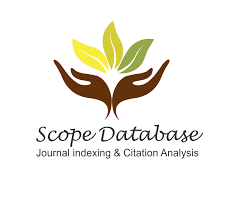Details
Leveraging Data Mining Tools and Techniques to Effectively Execute Sentiment Analysis on Social Media Data
Apoorva Khera
Carmel Convent School, New Delhi
Download PDF http://doi.org/10.37648/ijrst.v11i01.004
http://doi.org/10.37648/ijrst.v11i01.004
Abstract
Lately, online social media has taken a fundamental part in communication and sharing of information. Countless users prefer social media as it is accessible to many individuals with no restrictions to share their understandings and instructive opportunities for growth and concerns through their status. Twitter API is handled to look for the tweets given the geo-area. Understudies' posts on the informal organization give us only worry about concluding the system-specific schooling systems growing experience. Assessing such information in an informal organization is a seriously difficult process. The proposed system will have a work process to mine the information, which incorporates both personal research and massive scope of information mining strategies. In light of the different noticeable subjects, we will classify tweets into various groups. A Naive Bayes classifier will be executed on searched data for personal investigation purposes to comprehend the information better. It involves a multi-name grouping strategy as each mark falls into various classifications, and every one of the characteristics is free. Will take name-based measures to break down the outcomes and distinguish them and the current sentiment analysis procedure.
Keywords: data mining; sentiment analysis; social media
References
- M. Rost,L.Barkhuus, H. Cramer, and B. Brown, “Representation and Communication: Challenges in Interpreting Large Social Media Datasets,†Proc. Conf. Computer Supported Cooperative Workpp. 357-362, 2013.
- J. Bollen, H. Mao, and X. Zeng, “Twitter mood predicts the stock market,†J. Comput. Sci., vol. 2, no. 1, pp. 1–8, Mar. 2011.
- G. Siemens and P. Long, “Penetrating the fog: Analytics in learning and education,†Educause Review, vol. 46, no. 5, pp. 30–32, 2011.
- R. Ferguson, “The state of learning analytics in 2012: A review and future challenges,†Knowledge Media Institute, Technical Report KMI-2012-01, 2012
- G. Siemens and P. Long, “Penetrating the Fog: Analytics in Learning and Education,†Educause Rev., vol. 46, no. 5, pp. 30-32, 2011.
- G. Siemens and P. Long, “Penetrating the Fog: Analytics in Learning and Education,†Educause Rev., vol. 46, no. 5, pp. 30-32, 2011.
- M.E. Hambrick, J.M. Simmons, G.P. Greenhalgh, and T.C.Greenwell,“Understanding Professional Athletes’ Use of Twitter: A Content Analysis of Athlete Tweets,†Int’l J. Sport Comm., vol. 3, no. 4, pp. 454-471, 2010
- B. O’Connor, R. Balasubramanyan, B. R. Routledge, and N. A. Smith, “From tweets to polls: Linking text sentiment to public opinion time series,†in Proc. 4th Int. AAAI Conf. Weblogs SocialMedia, Washington, DC, USA, 2010.
- J. Bollen, H. Mao, and A. Pepe, “Modeling public mood and emotion: Twitter sentiment and socio-economic phenomenaâ€,inProc.5th Int. AAAI Conf. Weblogs Social Media, Barcelona, Spain, 2011.
- A. Abrahams, F. Hathout, A. Staubli and B. Padmanab- han, “Profit-Optimal Model and Target Size Selection with Variable Marginal Costs,†2013.
- R. Ferguson, “The state of learning analytics in 2012: A review and future challenges,†Knowledge Media Institute, Technical Report KMI-2012-01, 2012.
- G. Siemens and P. Long, “Penetrating the fog: Analytics in learning and education,†Educause Review, vol. 46, no. 5, pp. 30–32, 2011.











